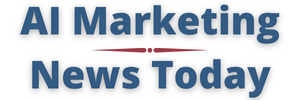Coca-Cola has an indelible connection to the holidays here in the United States. The company’s 1930s portraits of Santa Claus helped popularize the character as we know him today, and Coca-Cola commercials are a staple of the holiday season. Now, Coke is creating a new holiday tradition, even if AI critics really, really wish they wouldn’t.
For the second year in a row, Coca-Cola has partnered with AI studio Secret Level to create a holiday ad using generative AI. The new “Holidays Are Coming” ad features Coke’s classic Christmas motifs (polar bears, Santa Claus, red delivery trucks), as well as a menagerie of animated animals, all rendered using generative AI.
This Tweet is currently unavailable. It might be loading or has been removed.
SEE ALSO:
AI actors and deepfakes aren’t coming to YouTube ads. They’re already here.
But for AI haters, no amount of cute and cuddly cartoon bears, bunnies, koalas, otters, and capybaras can distract from the AI of it all.
On social media, AI video critics are fuming. But “Holidays Are Coming” is another clear sign that AI in advertising is a train that can’t be stopped, especially considering the backlash to Coke’s first AI video ad.
Last year, Coke released a similar “Holidays Are Coming” Christmas commercial with the help of Secret Level, the Los Angeles-based AI studio. The ad blended animation and photorealistic AI actors, which resulted in an uncanny valley effect. As Mashable wrote last November, the backlash turned Coca-Cola into the villain of the week online. Undeterred, the company is back with another AI video, which it hopes will inspire holiday cheer instead of holiday hate.
“The evolution of this kind of technology has allowed us to enhance our films and fine-tune our storytelling to create a piece of content that our customers are receptive to and that they will engage with,” Pratik Thakar, Global Vice President & Head of Generative AI at The Coca-Cola Company, told Mashable by email. “Last year’s film performed exceptionally well and was a success with customers, which is what matters most to us.”
Why AI in advertising entices brands despite backlash
Coca-Cola’s original 1995 “Holidays Are Coming” commercial used three real 40-foot trucks decorated with 30,000 light bulbs, according to The Independent, and the commercial’s earworm of a jingle was an instant hit. Primetime national commercials like this are usually expensive and time-consuming productions. But Jason Zada, the founder of Secret Level, says “it took about a month” to create this 90-second ad with a team of 20 people.
Generative AI promises to reduce the cost of animation by up to 90 percent, as the New York Times reported this year, and savings like that are simply too tempting to ignore.
Mashable Light Speed
“Last year, when they tested the ad with consumers and there was no mention of AI, it was one of the best testing ads in a very, very long time,” Zada said. “So I think that the average consumer, the average person, will look at this, and it’ll put a smile on their face, and it’ll hopefully make them happy. Hopefully, they’ll walk away and say, ‘This is a great ad.'”
But for many artists, creative professionals, and filmmakers, generative AI is problematic, full stop. They say it’s a bastardization of creative expression that relies on stolen intellectual property, wastes energy, and eliminates jobs. (One critic said of last year’s ad: “[Coca-Cola] is ‘red’ because it’s made from the blood of out-of-work artists! #HolidayFactz.”) As a result, many AI critics object to AI video in totality, not based on the merits of any particular effort. Even the smallest whiff of generative AI in filmmaking provokes a backlash. Yet despite the angry reaction online — and despite pushback from writers and actors’ unions — Hollywood and Madison Avenue are forging ahead.
The NFL released an AI ad earlier this year, and how many other brands are using AI without disclosing it? I suspect far more than people realize.
AI video has evolved dramatically in the past year. Thanks to video models like Google’s Veo 3 and LumaAI’s Ray3, AI video can be largely indistinguishable from human-made content, for better or worse.
Zada emphasized that AI studios employ artists, too. A behind-the-scenes video released alongside the new ad shows some of the human effort that went into creating the campaign, he said.
“I think the misconception is that it’s one person in their basement making these things. And I think that there’s a lot of human artistry that went into this,” Zada said in an interview with Mashable. “From hand drawing the original characters to, you know, a lot of the frame-by-frame animation in certain parts and even in the visual effects side of it…A lot of sketches went into creating all the original characters and trying to craft an original style that felt ownable.” He also said Secret Level artists “prompt very ethically” to avoid borrowing any specific artists’ style.
The ad is unlikely to do anything to sway AI boosters and critics from their positions.
While that battle plays out in agencies, boardrooms, and pitch meetings, expect to see more AI video ads on your TV in the years ahead.
Editor’s note: The quotes in this article have been lightly edited for clarity and grammar.
This article reflects the opinion of the author.
Topics
Artificial Intelligence
Viral Videos


